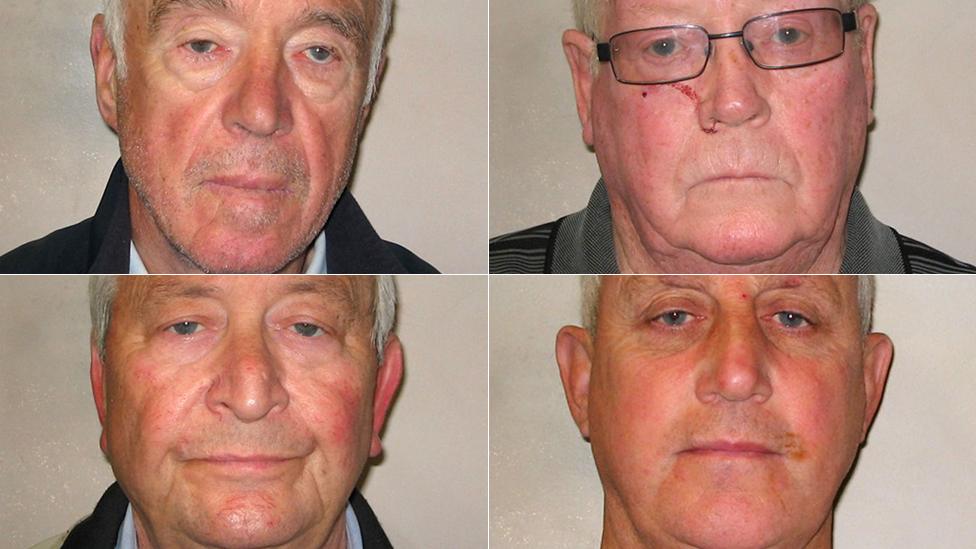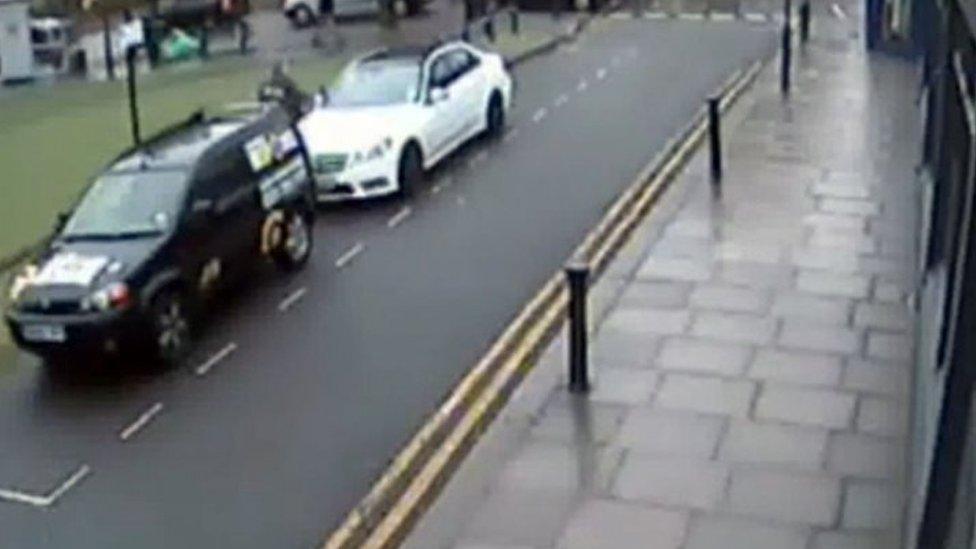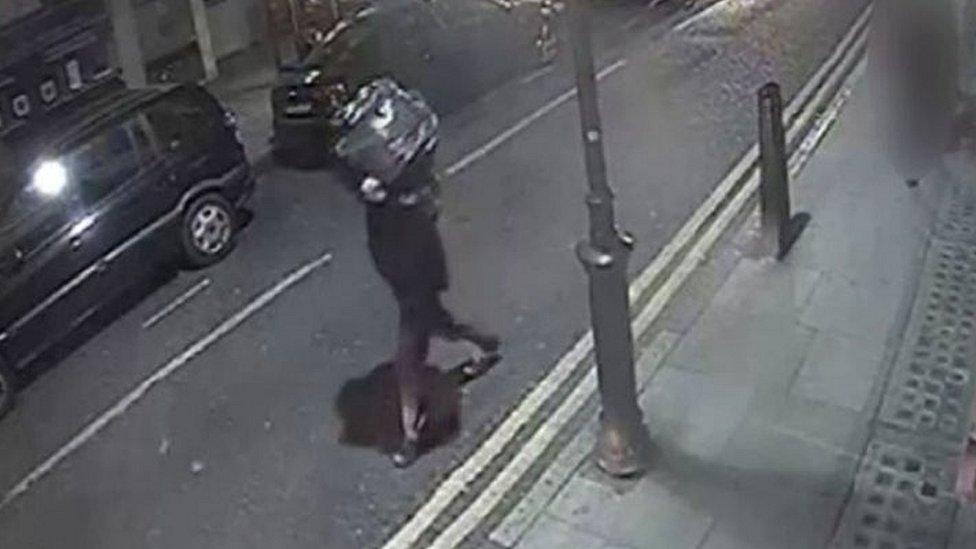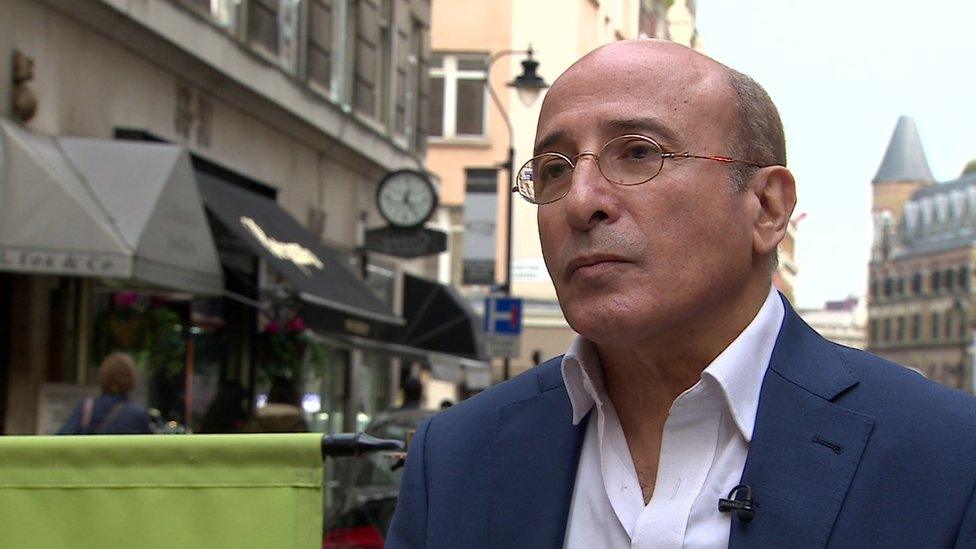Hatton Garden raid 'was doomed to fail'
- Published

The ringleaders' old-fashioned crime methods led police to their doorstep
When detectives first arrived at the scene of the audacious Hatton Garden heist it looked like the raiders might have pulled off the perfect crime - there were no fingerprints and CCTV hard drives were missing. The thieves were careful, but their meticulous planning was undone by their old school tactics.
Britain's biggest burglary was carried out under the feet of Hatton Garden's diamond dealers.
The ageing gang got hold of a key to the multiple-occupancy building, enabling one of them to simply walk in through the front door. Once inside, the man - known only as "Basil" - let the others in through a fire escape.
Dressed as workmen in high-visibility jackets and face masks, they went unnoticed as they lugged in the gear they needed for the job.
An estimated £14m of gold bullion, diamonds, jewellery and cash was stolen from a concrete-encased vault with a massive combination-locked safe door.
Daniel Sandford looks at the background to the Hatton Garden case
Few clues were left for police - just a gaping hole in the wall, and the heavy equipment the burglars had used to break into the vault.
The Hatton Garden gang's plan was ingenious. They had identified key vulnerabilities in the safe deposit's defences.
It was unmanned outside office hours and there was a disused lift shaft inside the outer ring of security. Crucially, the huge safe door could be bypassed by boring through the thick concrete wall with a specialist diamond-tipped drill.
But the old-school thieves were tracked down with modern policing techniques - high-quality CCTV, mobile phone cell site analysis, and a network of ANPR (Automatic Number Plate Recognition) cameras.
They also made a series of errors.
It was not enough to remove the CCTV from within the building. To completely cover their tracks they would have had to collect all the CCTV footage from all the streets around the Hatton Garden Safe Deposit, and they needed to use vehicles with changeable number plates.

The burglars' attempt to disable the alarm failed and it alerted a security guard
The gang got away with their first mistake.
They failed to disable the alarm completely and the damaged unit managed to get a signal out.
Kelvin Stockwell, one of the Hatton Garden Safe Deposit security guards was scrambled from home. He checked the external doors to the building but had been told not to enter unless police turned up, which they did not. So he went home, unaware of the drilling beneath his feet.

Security guard Kelvin Stockwell responded to an alarm call at Hatton Garden but saw no sign of a break-in and returned home
"You don't know what you're going to walk into," he said. "You can't take that chance. Because I could have walked in, I don't know what would have happened to me.
"I could have been clumped across the head or got tied up, whatever. That's why the policy was you don't go in on your own. You wait and hopefully if the police turn up you can go in with them."
The gang also got away with their second mistake. On that first night - Maundy Thursday into Good Friday - they did not manage to get into the vault.
They drilled through the wall but encountered the back of the safe deposit box cabinets, which they could not push over. They returned on the Saturday with a new ram and this time managed to force their way into the vault and make off with around £14m of gold and jewellery hidden in holdalls and wheelie bins.

Kenny Collins' white Mercedes parked near the scene provided police with a fruitful lead
It was their third error that proved to be their downfall.
One of the gang had used his own car - a distinctive white Mercedes - to visit the Hatton Garden area. Detectives spotted it on CCTV footage and traced it to Kenny Collins, a thief with a criminal record dating back to 1961.
Two weeks after the burglary, the Flying Squad started a massive surveillance operation. Following Collins led them to Brian Reader, who was jailed over the £26m Brinks Mat armed robbery in 1983, and Terry Perkins, who served for 22 years for robbing the vaults of Securicor in the same year.
The Flying Squad was subsequently given permission to put listening devices into two of the gang members' cars, which enabled detectives to hear the men planning to move some of their loot.

The man referred to as Basil by his co-burglars has not been traced by police
On the day of the handover, detectives watched as £4m worth of stolen goods was delivered to Kenny Collins' Mercedes. Minutes later they caught most of the gang red-handed and then proceeded to round the rest of them up. Except for "Basil", who is still missing, along with £10m worth of Hatton Garden loot.
To show that the thieves were communicating with each other, and meeting up in London pubs to plan "one last job", police scoured through their mobile phone records, proving that they had been in contact with each other and producing a map of their movements.
If the gang had not used their own phones, and had instead used throwaway "burner" phones, they would have been much harder to trace.

Many of the safe deposit box owners were jewellers who had not insured their property
The gaps in their movements were filled in using records from the network of ANPR cameras around London. It was relatively easy to show where the men had been travelling in the weeks before and after the burglary.
The burglars were too out-of-date to implement their plan without being caught - it was doomed to fail.
This was not a victimless crime. The burglars smashed their way into 73 safe deposit boxes. Of the 40 owners to be identified, many were jewellery traders like Sammy Akiva, who was uninsured and lost hundreds of thousands of pounds.

Sammy Akiva was one of 40 victims whose property was stolen from Hatton Garden Safe Deposit
He said: "The police told me 'Your box has been broken' and honestly I didn't know where I was, I was screaming. I took it terrible."
Mr Akiva said he continued to suffer ill health from the shock of the burglary, felt "dizzy all the time", and was still taking medication.
Baljit Ubhey, the chief crown prosecutor for London, said that although £4 million had been recovered, every effort would be made to find the missing £10 million.
"There absolutely will be ongoing investigations to uncover more of the property and so I don't think the defendants should think they've got away with the other two thirds."
If prosecutors can show the burglars tried to convert their property, the CPS can go after their assets, she said.
"We can apply for restraint, we can apply for confiscation and that doesn't matter if that happens years later," she added.
- Published14 January 2016
